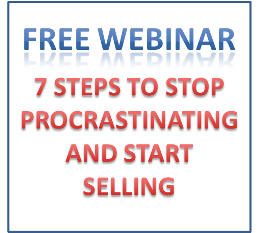 In the past I have exhibited at a number of exhibitions, both as an employee and in my own business at The Business Growth Show and the Business Start-up Show in London Excel. Doing this as an employee is soooo different to exhibiting for your own business!
In the past I have exhibited at a number of exhibitions, both as an employee and in my own business at The Business Growth Show and the Business Start-up Show in London Excel. Doing this as an employee is soooo different to exhibiting for your own business!
Both exhibitions for my own business were great experiences, went really well and I was very proud of what we achieved in terms of generating leads for the business.
When I reflected on what worked and what could be done differently, I decided to write a blog so that other business owners can benefit from it. So it’s in the form of a 10 Step checklist. This list is not exhaustive, do your research aswell, if you go ahead with an exhibition stand.
1. Make sure your target market will be there, in particular that your ideal client will be in the crowd
It is a numbers game but the resulting ratio of attendees to genuine prospects has to make it worth your while, so you need to balance the potential in terms of quantity and quality! Question who is attending as well as how many, who else is exhibiting, is the location right, what else is happening at the event to attract people (workshops, networking) and will that be talking to your ideal client?
2. Make sure it’s part of an overall business and marketing strategy and leading towards your overall business vision
A one off ad hoc stand at an event may bring you some results if you are lucky, however don’t leave it to luck, make sure it is a part of a bigger picture and make sure all your ducks are in a row before the date.
3. Have a clear vision of success for the event itself (as well as in the follow up) and set goals
Set financial targets and in addition think of the other gains that can be made that are also valuable both for the business and for you as a business owner. This will be personal to you so you would benefit from considering what tangible and intangible gains you want from it, what business gains and what personal gains? Examples are:
– potential joint venture partners
– building your brand (including creating new marketing material that can be used afterwards)
– adding to your network
– market research and idea generation for future innovation
– building confidence
– increasing credibility
4. Work out what resources you need and what you already have available to you?
Think about what resources you need to really make a success of it. What people resource (to exhibit with you, to help you set up, to talk about it with for support, to give expertise)? What physical resources are required – posters, flyers, chairs, lighting, technology? What do you need to learn about to get the best from yourself and the event? Etc.
Make a checklist of all the ideal resources, then consider what you already have in relation to that before planning how you can work to fill the gap. Brainstorm on your current resources and ask others for help as you will be surprised what is available for you.
This step is essential for you to work out if you have the most important resource of all – MONEY -can you afford it? Don’t go into it blindly. Work out what you need to make a success of it and then price it up. Then go back to your financial targets to be clear on exactly what results there needs to be to get a return on your investment. Does it make sense?
 5. Make your posters and flyers match, have simple clear messages and have impact.
5. Make your posters and flyers match, have simple clear messages and have impact.
Think about the size and material of both the posters and flyers so that you balance quality and practicality -posters that rip and thin flyers aren’t a good look!
6. Think of ways to entice people on to your stand
Tactics include free prize draw, money off vouchers, sweets/chocolates, innovative technology to try, videos, branded gifts etc.
Most important of all is to make sure that you have warm, receptive (but not too pushy) staff to welcome people onto the stand, and you give people space look and think for a second before ASKING AN OPEN, QUESTION, like “how are you finding the exhibition?” To get the conversation started!
7. Prepare your presentation and questions in advance
Remember always to ask questions first to inform your presentation of your offer and to qualify if they are in your target market (time is precious so be efficient in spending your time talking with the right people). Have a pre-prepared presentation/pitch to demonstrate what you do and the benefit from it. Introduce them to the call to action.
8. Have a clear call to action
Do you want to capture their details? – Have a form to complete and a reason why they should (we told them I would email them details on an exciting free webinar). Perhaps the prize draw requires contacting them after. Or have you created a free or low priced product that they have to sign up for (the stand opposite us charged £1 each for a gadget making £1600 over the two day and getting as many contact details!)
Don’t underestimate the need to communicate with your team in advance so that you can communicate your strategy, get them revved up for it and discuss any concerns. Some can wing it but even them will do better if they are fully prepared.
10. Be prepared to work hard afterwards to convert your leads
This is only the beginning! The odd business will make their return on investment at the event but for most the hard work comes after with the follow up. Don’t expect people to come running after what you offer, and for all the orders to just fly in (even if the vibe was great on the day). Normal selling principles apply (it takes on average 6-7 interventions for someone to say yes!) That’s why step 2 is so important that this is part of your overall business and marketing strategies.
Thanks for reading!

